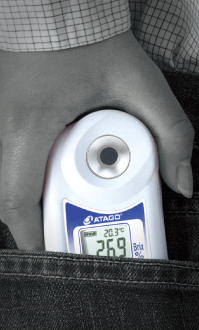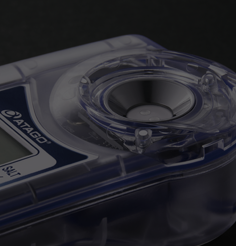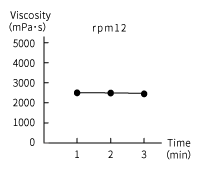 ys
ys
-
News
-
Products
Products

Search by products
Viscometer Meter pH Meter Refractometer In-line Refractometer IR Brix Meter Salt Meter VIEW ALL
Search by application

Search by customers
-
ATAGO Lab
-
HACCP
- Support
- Company
-

- Global



































Customer comments
Our customer, a restaurant that offers Hamburg steaks uses the VISCO™ to manage their sauces, ‘tare’ (Japanese dipping sauce), and salad dressings. This customer is not only testing viscosity, but also carefully checking the concentration and salt content of their food.